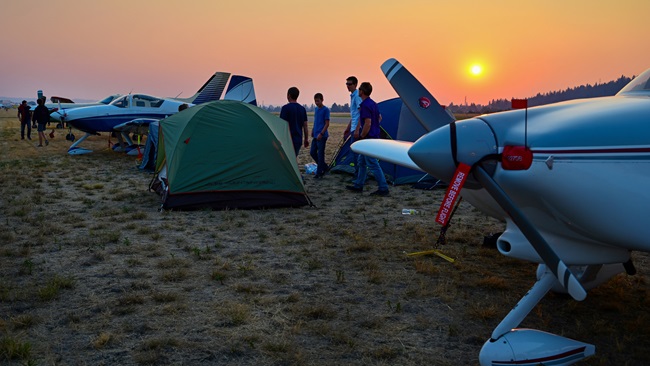10 health concerns and how to avoid them

“Please put your seat into the full upright position.” Really? When plummeting into a mountain, do those two inches really matter? Flight safety has improved with better equipment, training, sensible rules, and knowing your limits. But there are aviation risks, quite literally above and beyond those caused by terror and fear of metal meeting terra firma.
The three most useless things in aviation? Fuel not pumped, runway behind, and sky above. Altitude may be valuable should an engine failure occur, but it has drawbacks, so take pilot health into consideration when chosing cruise level. Physiologic impacts from flight are affected by age, weight, and general health.
1. I harp about oxygen so much that the New York Philharmonic Orchestra should hire me! With increasing altitude, air is “thinner;” on ascent one leans the mixture to prevent fuel/air mismatch. In unpressurized aircraft, each breath includes less oxygen and your resultant respiratory mismatch—hypoxia—impairs vision, performance, and increases the risk of heart attack or stroke. Buy an oxygen system, pulse oximeter, and breathe deeply.
2. Scuba divers know about nitrogen coming out of solution, forming bubbles, and blocking blood vessels—called decompression sickness or “the bends.” With today’s fast-climbing, turbocharged GA equipment, the same thing can happen. Visual disturbance; headache; joint, abdominal, or chest pain (“the chokes”); widespread itching, a mottled skin rash, or formication—the sense of insects crawling on your skin—indicate the aviation bends. This is very serious, requires urgent treatment, and largely can be avoided by awareness and pre-breathing oxygen. Sensible mountaineers do not climb to 18,000 feet without oxygen and neither should you.
3. The air up there is not only oxygen-poor, it is dry. Faster breathing causes more water to evaporate with each breath and dehydration can follow, so increase your fluid intake to prevent nosebleed, headaches, and kidney and heart damage. If you are not using that red plastic bottle, you are not drinking enough.
4. Pressure from your spouse or job, or rapid altitude change? The Eustachian tube connects ear to throat and equalizes pressure between them. With upper respiratory infections or allergies, swelling impairs your ability to balance pressure, inducing intense pain in your middle ear; this can be avoided by not flying when unwell. Ask your passengers about ear issues before flight to avoid them having an unpleasant experience. Plan altitude changes and, if given too rapid a descent by ATC, remember the magic word, “unable.”
5. Here’s a clever, but painful way to remind yourself that you have a dental cavity—go flying! Pressure changes can cause gas trapped in a tooth to expand and, quite literally, get on your nerves.
6. Why airlines serve carbonated beverages on board baffles me—200 sedentary people sipping soda in an enclosed metal tube and then exposing them to pressure changes? First, intestinal gas will expand, inducing abdominal pain; second, that gas has to find a way out, having obtained odiferous enhancements from its colonic course. So avoid drinking the real thing when doing the flying thing.
7. When I fly I am really cognizant of vertigo risks. Please review this topic, as it represents a risk to all of us. Although turbochargers and bigger engines are power, so is knowledge (see “Fly Well: Oh, No, Vertigo,” AOPA Pilot January 2013).
8. Altering your elevators and elevating to altitude lifts our spirits, as well as our bodies. As you punch a hole in the sky, inspiring delight, did you ever think “that sun on my face feels so good?” Pilots are twice as likely to contract skin cancer, and with more than a million cases a year, someone dies every eight minutes. Make sure you are not one of them; wear sunscreen daily, an AOPA hat, and a long-sleeve shirt when aloft.
9. Cataracts are the most common cause of vision loss and exposure to bright sunlight is a major cause. Plain and simple. Buy yourself some of those fancy sunglasses—look cool and protect your eyesight.
10. As you know, pilots are the highest form of life, but to paraphrase Orwell, some pilots are higher than others. I am talking astronauts here, and those brave men and women have additional health threats to consider from microgravity and radiation exposure—bone and muscle loss, spinal and visual problems, and changes in pressure inside the brain. Now, does my harping seem quite so painful to listen to?
Aviation gives us a magic carpet to ride, but comprehending how your body is affected by flight is as important as understanding how carb icing occurs. Now that’s magic. Fly well.
Dr. Jonathan Sackier offers medical advice for pilots through this column and in videos on AOPA Live This Week.
Email [email protected]



